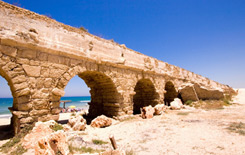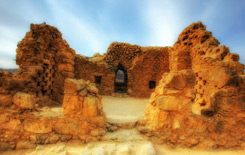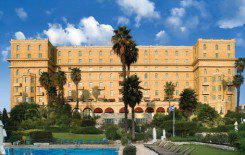Israel Based & Family Owned, We Love Our Clients!
Our goal is to inspire every customer that travels Israel with our company. We care about our customers and work hard to give the best of Israel at the best price! Shalom Israel Tours is family owned & based in Israel since 2002.
Weekly Israel Group Tours Tours Run Every Week of the Year!
Create a Custom Israel Tour Craft a 100% Private Tour!
Israel Hotel Deals Hotels Deals for your travel to Israel!
What People are Saying

We took the Jewish Heritage Tour and it was wonderful. We saw so many fascinating sites and our guide Yossi Galen was the best. He was very knowledgeable about the sights, recommended great restaurants, and made the trip more fun. I would highly recommend this trip.

























































I recently returned from a marvelous Jewish Heritage Tour of Israel. I'm thrilled to have had such a wonderful, engaging experience with SHALOM TOURS. Our tour guide, JACKY MAAYAN, was so knowledgeable and thorough. His enthusiasm and love of Israel was apparent in the emotion he showed. Having been in Israel 31 years ago, this was my dream to return, and it truly was a trip of a lifetime. We added the Eilat extension, and visited Petra, Jordan as well. I highly recommend Shalom Tours to anyone planning on going to Israel.

























































Shalom Israel Tours met and exceeded my hopes and expectations! Everything they said they would do, was done! Sagi, our tour guide, was absolutely wonderful! He was knowledgeable, friendly, and genuinely interested in making sure our group was having the best experience possible. He was sensitive to the needs of our group. He did many "extras" to make our trip even better. He was willing to work with the agenda according to the needs and wants of the group. I cannot say enough good things about this fine young man. He made Israel "come to life" for me.

























































Took the 13-day Jewish Heritage Israel Tour in late November 2019. From the timely and precise answers provided by Shalom prior to booking the tour, to the delivery as we arrived in Israel and through the end of the tour I give the entire experience a superlative grade.
This was one of the top vacations we've ever taken and one that we will never forget!

























































Shalom Tours was recommended to us as a company who could work with a group that was multi-religiosity, multi level of Israel experience and multi-aged. Shalom Israel Tours was all of that due to great planning and to our tour guide Daniel.
Further, with a December trip the weather was quite variable and Daniel and Shalom Tours were flexible and accommodating. They understood our primary focus was on giving the children an immersive experience and they succeeded on all counts.

























































I would happily recommend this tour to anyone interested in a Jewish oriented trip to Israel with a small group. We had 10 people in our group which was an excellent number to travel with for 12 days. Our guide, Itzhik Gelber, Was highly knowledgeable and authentically friendly.
The hotels were superb throughout the trip. Shalom himself is very responsive. First class trip!

























































I have traveled extensively and hired private tours on six continents, Shalom Israel Tours is the absolute best I have ever used. From our arrival in Tel Aviv until our departure, we were in excellent hands. Our tour guide, Mordecai, was friendly, knowledgeable, very accommodating and always on time. We felt like part of his family. Thank you Mordecai and thank you Shalom Israel Tours. I wish I could book you for all my travels on this rock we call home.

























































Meni Tzabari, our tour guide in Israel, can only be described as phenomenal. For two weeks Meni explained in depth all the venues we visited. More than just giving a history, Meni gives the “inside” story. His passion for Israel was evident throughout our tour. Meni also took care of each and everyone of us, taking into consideration our individual needs and requests.
Meni made our trip to Israel unforgettable. I rate Meni 5 stars plus!!

























































An incredible 10 days - breath taking views - thanks to Doron, that shared his knowledge on the history of Israel with passion, wonderful guide, thanks to the perfectly organised tour thanks Shalom Israel Tours, agency that I warmly recommend - I look forward to go back to Israel !

























































I can not say enough positive things about dealing with Shalom. From the very beginning we planned out our itinerary going back and forth with changes to suit our family. He was incredible in getting back to us so quickly. When I mentioned a special need with my son ,he picked the absolute best guide imaginable. This was our first trip to Israel and one that we looked forward to taking for years. Dealing with Shalom Tours made this trip unforgettable in so many ways. We learnt so much more about the history than we already knew and when we needed a break from that, we were zip lining and taking camel rides!

























































Second Israel trip booked with Shalom Stark. Tel Aviv, Eilat, Jordan, back to Tel Aviv to Sea of Galilee and then to Jerusalem. He takes care of every detail no matter how small and takes safety seriously. If you are traveling to Israel you need to use this tour company.

























































We took the 10 day Classic Israel tour and loved every minute!! We were met at the airport and transported to our hotel with ease, enjoyed a day on our own in Tel Aviv, and then started our bus tour to amazing places. Our guide- Ze' ev was outstanding!!. He knows SO much of the history of Israel, and managed to get us to the best places before the major crowds arrived. This tour visited both Jewish and Christian landmarks throughout Israel, which we really enjoyed, I highly recommend this tour group- everything went smoothly and they planned for every detail. You can't go wrong!!

























































If you're looking for a tour that is "just right" in length and itinerary, with all the key sites and sights, the 10-day Jewish Heritage Tour will be ideal. Even with all the great reviews Shalom Israel Tours receives, we were a bit skeptical. Believe me ... IT REALLY IS SENSATIONAL. From the accommodations to the pacing, the activities to the free time, it was a fabulous tour for first-timers. We saw all the essential aspects of the country ... rich in history and diversity. They focus on Judaism but also expose you to the other religions as well. Our tour director, Isaac, was in a word, wonderful. Felt like a family member after 10 days. Every detail was buttoned-down perfect from the pre-planning communication to the gift bag at the hotel to the final transfer to the airport. Would I recommend Shalom Israel Tours? Absolutely!

























































My first experience, touring Israel was enchanced by our amazing tour guide Meni. His passion and knowledge of his beloved Israel was apparent throughout our entire trip. Meni was the best of the best. He took us to so many wonderful places and surprised us with a new adventure, that we weren't expecting, everyday. We visited so many sites and felt as though he took us to places that most people don't get to see. This is a top notch organization, starting with our initial communication with Shalom, who responded immediately to my first inquiry, and every one, thereafter. Our 10 day tour was packed
with fun, excitement, emotion and so much more than we expected. Anyone who gets Meni as their guide will be as thrilled as we were, and working with Shalom was a pleasure. He was so professional and responsive. I would highly recommend this company to anyone who is contemplating visiting Israel.

























































We just got back from Israel, having used Shalom Israel Tours. Shalom was fantastic--super responsive as we set up the trip, answered all of my (many questions) during the process, and the tour and trip were excellent. Our guide Mordechai was incredibly knowledgeable and fantastic. I would highly recommend using a tour guide in Israel unless you are already very familiar with the country and all of its history. It's too much to do on your own. And I would highly recommend using Shalom Israel Tours.

























































From the moment I contacted Shalom Israel for information on booking our 10 day Jewish Heritage tour we were taken care of with excellent service. Shalom patiently answered all of my questions before we signed on, helped us add extra days at the end of our trip and provided tons of helpful information that made preparing for this trip a breeze. In fact it was so easy that this was one of the easiest vacations I have ever taken. The tour itself was fantastic with a packed itinerary of one amazing stop after another. It also helped that our tour guide Meni was fantastic. We will be back in a few years and will book through Shalom Israel again without hesitation!

























































Truly wonderful tour throughout Israel with a very knowledgeable, personable guide (Doron) and a good-sized group of fellow tourists (40 total). Lots to see and do (so much packed into a country the size of NJ), great history to learn, wonderful events to witness (bar mitzvahs and Friday night services at the Western Wall in Jerusalem were the highlights for me). Far too much food at breakfast; still need to work off the extra pounds despite the large amount of walking we did. :-)

























































Shalom Tours is extremely well organized and very professional. We did a private tour with another couple and a private guide, Yehuda. He was incredibly knowledgeable and conveys his passion for history, geography, Bible and politics from 3000 years ago until today.
He paced us perfectly and obviously loves what he does. He is a wonderful ambassador for Israel and the depth of his historical perspective reflects a beautiful blend of people, places and his terrific personality. By the end of our 10 days together we all felt like Yehuda’s family.

























































Words can’t express our pleasure with Shalom Tours and our guide Shimon. Our family of 5 recently returned from our trip of a lifetime. The memories we made will never be forgotten!! From the very beginning planning Shalom’s immediate responses and insight were greatly appreciated. Our guide Shimon felt like family by the end of our trip, he was beyond knowledgeable and geared our days around jet lag and two teenage boys :-)
We will never forgot our trip and cant thank Shalom and Shimon enough.

























































A friend recommended Shalom Israel Tours and it was the best decision we ever made to use them for our trip to Israel to celebrate our son's bar mitzvah. Shalom was easy to work with, very responsive and helped us plan amazing activities as we toured the country for the first time. Our guide Daniel Gutman was the absolute best. He will be a friend for life and was so knowledgeable and full of historical facts. If you are reading this, look no further. Use Shalom and you will not be disappointed!!

























































They say the “ best memories” are made on trips and vacations and this statement couldn’t be more true for us. We were a family of 6, 4 adults and twin 6 year olds, booked on Shalom Tours with a private car and guide for 14 days.
Everything was planned for us and went so smoothly ,from being greeted at the airport and swept off to our hotel in Tel Aviv to our departure from Jerusalem back to the airport.

























































We had an amazing 12 day private tour through Shalom Tours. Shalom Stark was a pleasure to deal with. Whenever we emailed him, he responded to our inquiries immediately. Our tour guide, Yehuda was fantastic ! I would highly recommend Shalom Tours in planning your next visit to Israel. It was a trip filled with a lifetime of great memories.

























































We had an amazing 12 day private tour through Shalom Tours. Shalom Shark was a pleasure to deal with. Whenever we emailed him, he responded to our inquiries immediately. Our tour guide, Yehuda was fantastic!

























































The tour Organized by Shalom Tours was outstanding in all respects. Everything promised was delivered and more! Our tour guide Meni was fantastic and he made the tour absolutely fascinating. I can highly recommend Shalom Tours and Meni as a guide!

























































Our first visit to Israel, March 7-21, was inspiring, eye-opening and surprisingly emotional. Shalom Stark, through Shalom Israel Tours, provided an excellent itinerary, impeccable lodging and an extraordinary tour guide for our 2 week Jewish Heritage tour. Needless to say, we were more than satisfied....

























































In one word, Wow! Truly, this was the most amazing trip we have taken anywhere in the world!!! Magical, historical, beautiful, just fantastic in every way. Shalom Israel Tours came through in every way and they delivered 100% as advertised

























































We had an amazing trip to Israel thanks to Shalom Tours and our wonderful guide, Shimon who made the experience so special for us! We couldn't have been happier and would highly recommend Shalom Tours and Shimon to anyone traveling to Israel!!!

























































As far as we're concerned, Shalom Tours is the Cadillac of the Israeli-based tours. From the moment we met our guide, Shimon, our tour was the most informative and in-depth experience that one could ever hope for.

























































My husband and I both agree that choosing Shalom Israel to have a tour around all country was the perfect choice. Communication with Shalom was above expectations all along from the day when we first contacted them online through the end of our trip.

























































Terrific tour--the guide, Mali, could not have been better--knowledgeable, enthusiastic, and a great people person. Shalom Stark went out of his way to help. Would recommend to anyone looking for a Jewish Heritage tour.

























































Our guide Mali was fabulous. Her knowledge of history and all the sites we visited made the experience all the more memorable. She went out of her way to make sure we got to experience Israel at its finest, up to and including the kiddish on Mt Scopus.
I would highly recommend Shalom tours to friends.

























































There are no words to describe how wonderful our trip was. It was perfect in every way.Doron's passion and love for his country was contagious. The trip was well organized and flawless. I would not hesitate to use this company for any travels in israel.The hardest part was coming home!

























































Our 6 day private tour was incredible! From the start, Shalom helped us create a tour that was perfect for our small group. This was our first trip to Israel for my son's bar mitzvah and I wanted to make sure that we saw all the must see sights including activities that would be fun for the whole family. And that is exactly what Shalom created!

























































We had the trip of a lifetime. Tour could not have been better. Trip went like clockwork. Accommodations were fantastic!

























































We did the Jewish heritage tour with Mali as our guide. Everything was fabulous from the moment we landed until we left!

























































Unforgettable vacation. I spent 13 days in Israel during the Jewish Heritage Tour. In two words, everything is as it is presented. Shalom is very prompt and he tries to find solutions for any demand.The guide Doron is experimented, a good leader and good in time management. Although I was alone, I did not feel lonely at all; the group was fantastic.

























































For the time you are met at the airport to your goodbyes this company knows how to do it all. We chose small groups. It was intimate and we all became great friends by the end. Sad it was over. They are right get ready to walk. And walk we did! Yossi was our tour guide for the 8 days and he really knows how to give a tour. You won't go wrong with this tour group.Hotels are 5 Star. Breakfast was exceptional.

























































We just returned home after the best trip of my life. Shalom Heritage tour was superb; our guide Eli Dabi was the most knowledgeable, professional, and spiritual guide ever, and our bus driver, Hussein, the most skillful negotiator of narrow streets that could be imagined. They both performed way beyond expectation, being especially helpful after I sprained my ankle leaving Petra. Kudos to Shalom Tours, Eli, and Hussein for our wonderful experience.

























































Just finished an awesome 9 day tour with Daniel and Shalom Tours. He was a great guide. Many thanks!

























































"OUTSTANDING! AMAZING! PERFECT! This trip was 100% MORE than I expected."

























































"I didn't even want to wait until we got home to thank Shalom & Doron. Shalom was our tour operator and I can say he attended to every detail!"

























































"Shalom's follow up before , during and after the tour could not have been better. Our guides Ilan for Tel Aviv and Doron for the rest were excellent."

























































"The planning was made simple by the responsiveness of Shalom, the owner, and included everything we wanted. Hotels were first rate, restaurant recommendations were very good, and sites were terrific."

























































"I just completed the Classic Tour and it was wonderful. The tour went off without a hitch from being picked up at the airport to our return. The hotels were excellent and the guides were terrific."

























































"Twelve friends just completed a 2 week private tour with Shalom Tours--it was a trip of a lifetime."

























































"My husband and I just finished an 10-day Jewish Heritage Tour with Shalom Israel - from start to finish everything exceeded our expectations. Our wonderful guide Mali, the sights, the impeccable service from Shalom Stark including super quick responses to emails regarding hotels and airport transfers... the Tour was a trip of a lifetime."

























































"We just completed a wonderful 2 week tour with Eilat and Petra. This was our second time in the country but both of us had not been here in many years. From start to finish Shalom Stark was fantastic! The trip was superb."

























































"Our guide Mordechai Weiss was exceptional. He happily met all our needs and requests. Our Jerusalem Shabbat guide Emmanuel Kushner showed us every corner of the old city. Shalom Stark (Shalom Israel Tours) listened to all our ideas and added ideas we hadn't thought of. We can honestly say we saw Israel from the North to the South and the East to the West."

























































"Shalom is incredibly organized and flexible and always responded in a timely manner. I'm not sure you could find anyone more knowledgeable and interested in history than our guide Mordechai. Our group ranged from 12-48 years old, and he had everyone's complete attention. We had such a fabulous week traveling with him and didn't have to worry about anything! "

























































"We were in a small group tour of 10 people who all became like family by the end of the tour. The tour guide Eli Dabi is one of the nicest, hardworking, tour guides we have ever experienced. Eli made our trip fun,as well as interesting. I would recommend Shalom Israel tours to anyone!"

























































"Our trip was wonderful from beginning to end. Shalom Stark arranged the trip to include everything on our to-do list. His personal touch was obvious through the planning stages, a minor hotel issue and the cookies in our room. Anyone he sent to greet us or drive us was pleasant, funny and on time. Our guide Mordechai was perfect!"

























































"Highly recommend Shalom Tours to help with your trip to Israel. Shalom Stark listened carefully to my concerns for my family of five, including my three teenage children and wife. Shalom helped organize a perfect tour that took into account MY family's desires. Our tour guide was Daniel Gutman. Daniel was fantastic!"

























































We just returned from an incredible trip organized by Shalom, and led by our fabulous tour guide Daniel Gutman. We had found Shalom tours on Trip Advisor---the reviews were all outstanding---and our experience was equally outstanding. Everything, from our "VIP Greeting" at the airport (very impressive) to the moment we were dropped off, was smooth and organized.

























































"From the moment our plane landed to the moment we left, our tour was organized to the last detail. Although some members of our family were concerned before leaving for Israel, we never felt unsafe for even a moment. Our guide (Mordecai) had an incredible wealth of knowledge."

























































"My son and I went on the 10 day Jewish Heritage tour and added 2 days in Jordan to see Petra and Waidi Rum. Everything about this tour was A+. The hotels were fantastic, our tour guide Aaron was great, and we are so happy with the entire experience."

























































"Where do I start? Look no further - Shalom is the way to go if you're planning a trip to Israel and definitely request Yuval! Thanks to Yuval, we learned more than we ever imagined and added significantly to the enjoyment of our trip. In retrospect we can’t imagine touring Israel without him."

























































"Shalom Israel Tours is the BEST tour company you can book whether you are traveling solo like me or as a couple or family. Really, you do not need to look any further, this is such an amazing tour company; the personal touch and attention to detail is incredible."

















